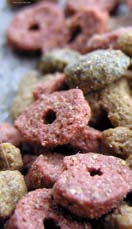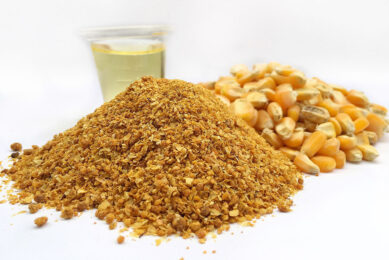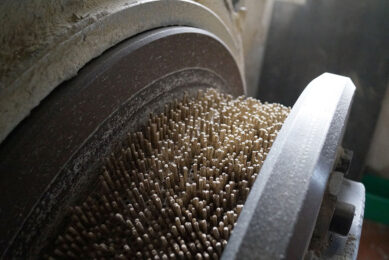Technical functionality of different pet food ingredients

Technological functional ity of ingredients is an important factor in pet food processing as it literally holds the product together. Gel formation, binding, setting, thickening, stabilising are all dependant on the ingredients used in combination with the processes. Clyde don from CCL in the Netherlands explains some of the basic facts.
Technically speaking we can divide the current pet foods that are on the market into five types:
Dry, semi-moist, moist, canned and “fun” snacks. The manufacturing of these different pet foods relies on technology but most vital to the pet foods are the ingredients. Animal derived proteinaceous/meat materials are the main ingredients in pet food (20-75%). Various protein meals, derived from cattle, sheep, poultry and pigs are important for enough (essential) amino-acids to be included in the diet. Wheat/flour, starches, corn, gelling agents (Guar), emulsifiers, fat, vitamins and minerals and other functional ingredients make up the remainder of the pet food. These ingredients are the key to a tasty, juicy, nourishing and healthy pet food.
Gelling and binding
Thermal gelation of meat (muscle) proteins used in pet food is an important step in the processing. During the first stages of heating the proteins denature (20-40°C), as the temperature rises (> 60°C) the modulus G’ (=gel strength) increases indicating heat induced bond formation. After a so-called cooking stage (90°C) the gel strength increases even more. Similar to a boiled egg the gel stiffness of meat is irreversible. The final stiffness of the meat gel formed here is similar to that of a hard-boiled egg.
This type of heat induced gelling or binding is important for product texture and stability. As an example, a 2% blood plasma addition can give an increase in gel strength of 60-80%. When starch is being gelatinised, it gives the water in the product an increased viscosity, which in turn will lead to a nice thick and juicy appearance of the end product. Binding agents are also used for this purpose. A familiar example is gelatine, but other animal proteins also have the capacity to do the same. Also commercial products like Pro-Bind Plus® are helpful in stabilising various structures in the pet food.
Appearance of the product
Adding emulsifiers to pet food is important for keeping the fat-phase homogeneously dispersed in the product. This keeps the product dry and non-greasy. Exudation of fat leads to a fatty shine on the product, which can also produce fat droplets on the so-called window of the package. Another aspect of the appearance is colour. Addition of haemoglobin powder can give the final product a deeper, darker colour. In the final product it is of course important that palatability, nutritional benefits and health promotion are of the highest standard.
Various palatability and taste enhancers can be used in pet foods. Examples include: greaves and animal fat, bloodplasma/proglobulin, intestine/organs – hydrolysates, cystein rich proteins/peptides, spleen and kerapro (a product made from feathers).
Health benefits
Regarding animal health, a variety of issues can be targeted by choosing the right ingredients. Obesity – an increased problem in pets – can for example be minimised by choosing low fat ingredients and increasing the fibre content in the end product. To prevent joint problems (in dogs), a company can choose to use collagens, chrondoitine and glucosamine for their special pet food.
Allergies are also an increased problem in companion animals. Several products are already on the market including hypo-allergenic hydrolysates of animal derived by-products (e.g. MucoPro). Regarding losses of nutrients, manufacturers have to watch the processing stages.
When certain ingredients are easy to oxidise then a milder processing should be chosen and more anti-oxidants included. For vitamins, a milder processing should also be used and a proper encapsulation technique to prevent losses in bioavailability.
In conclusion
This article just gives a short overview of what to watch for when choosing ingredients for pet food. Not only technical properties such as texture and colour need to be considered, but also product quality, animal health and price.
Source: Feed Mix Magazine Volume 17. No.1
Join 26,000+ subscribers
Subscribe to our newsletter to stay updated about all the need-to-know content in the feed sector, three times a week. Beheer
Beheer









 WP Admin
WP Admin  Bewerk bericht
Bewerk bericht